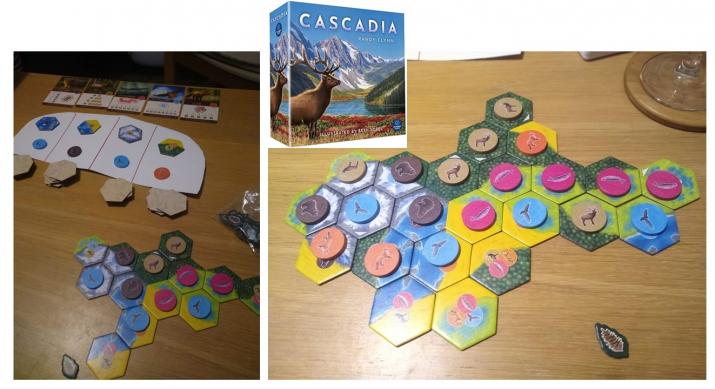
Label something ‘educational’ and for whatever reason it begins to sound, well, less fun. But since landscape ecology is not the best known discipline, it seems worth sneaking landscape lessons into any medium going. That was my first thought on unpacking Cascadia, a board game I was given by friends for Christmas that immediately calls to mind key concepts in landscape ecology (and happens to have won the prestigious 'Spiele des Jahres' award for 2022). Indeed, the blurb on the box describes players ‘competing … to construct a beautiful landscape mosaic’. Designed to celebrate the wildlife and ecosystems of the Pacific Northwest—aka Cascadia—the game instantly catches the landscape ecologist’s eye with its attractive interlocking hexagonal habitat tiles. Hexagons share with squares the advantage of tessellating perfectly, but unlike squares their perimeter remains roughly equidistant with the centre. In 2007 Birch et al. determined that hexagonal grids were ‘rarely used, even in applications for which they are more suitable than rectangular grids’. Has this changed since?
Back to the game: once underway, we found it quick and intuitive, with a shallower learning curve than some other recent board games (for example, Wingspan, another favourite of ecologists). Players take turns selecting from four possible pairings of habitat tiles and wildlife tokens. Tiles are placed into the player’s developing ecosystem, building up that lovely hexagonal grid landscape, with the first aim being to build the most contiguous habitat patches possible. Each of those tiles, meanwhile, is illustrated with one or more of the game’s five animal species, whose tokens can be placed on that tile. The habitat–species combinations are not always intuitive – salmon are just as likely to be found floundering on the prairie as they are swimming upstream – but presumably they were mixed up to keep the game play from becoming samey.
Scoring cards indicate the objectives for placing wildlife, with several alternative sets of cards gradually ramping up in complexity. After just three plays, we still haven’t progressed beyond the starter level, in which Grizzly Bears like to be in pairs (not but too close to other pairs), Red-tailed Hawks favour the solitary life, Elk (Cervus canadensis, like an oversized Red Deer Cervus elaphus) prefer to be in herds—provided, for some reason, that they’re walking in single file— while Chinook Salmon form undulating runs. Red Foxes like diversity, scoring more for each species inhabiting neighbouring tiles. So, embedded within the gameplay, we have 3Cs rewilding as per Soule and Noss (1998) cores (bigger patches = better), corridors (contiguous linear habitats score just as highly) and carnivores (the paired bears).
As an ecologist who works primarily on insects, the choice of a mere five species – three mammals, a raptor and a fish – feels limiting, though at least the less well known Red-tailed Hawk Buteo jamaicensis (essentially a Nearctic equivalent to the Common Buzzard Buteo buteo) gets a starring role instead of the Bald Eagle. The game makes a virtue of concentrating on ‘keystone’ species by offering ‘Nature Tokens’ in return for placing wildlife on single habitat hexagons. The tokens are illustrated with ‘cones from the mighty Douglas Fir’, the only nod to the existence of any plant species beyond the heavily stylised trees on the forest tiles. And, from a UK point of view, the thing most strikingly missing is any sign of humans whatsoever: this is very much about creating extensive wilderness in the John Muir sense. Perhaps for UK practitioners, working in crowded, contested spaces, a more realistic board game would look closer to the appealing multifunction landscapes of Burton et al. (2019), but still, Cascadia is pleasantly diverting for anyone with at least a passing interest in both board games and landscape science.
References
Birch CPD, Oom SP, Beecham JA (2007) Rectangular and hexagonal grids used for observation, experiment and simulation in ecology. Ecological Modelling 3-4: 347 – 559
Burton V, Metzger M, Brown C, Moseley (2019) Green Gold to Wild Woodlands; understanding stakeholder visions for woodland expansion in Scotland. Landscape Ecology 34: 1693 - 1713
Soule M, Noss R (1998) Rewilding and Biodiversity: Complementary Goals for Continental Conservation. Wild Earth 8: 19 - 28